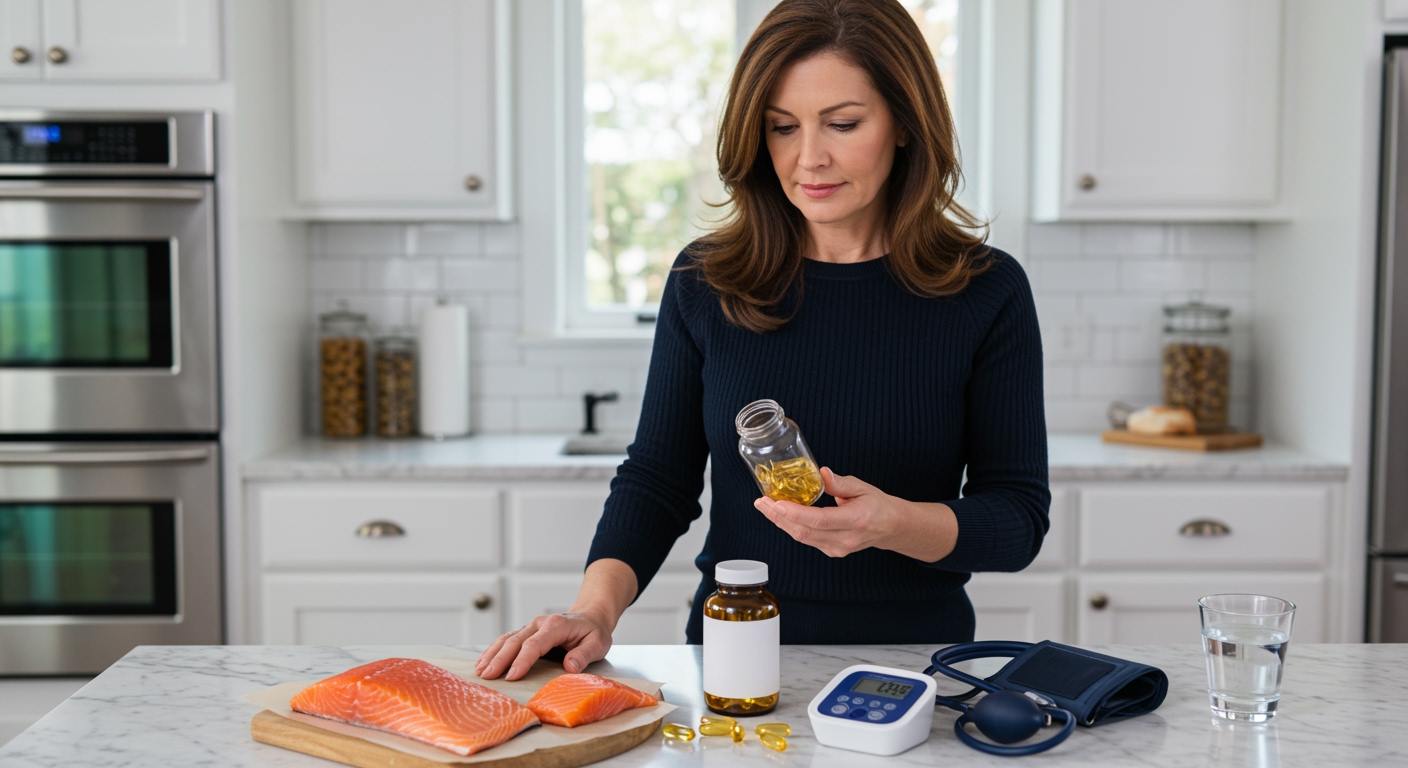✪ Key Takeaway: Sardines are generally safe for high blood pressure when you choose low-sodium varieties and eat them in moderation.
Introduction
Your doctor just told you to watch your sodium intake because of high blood pressure.
Now you are staring at that can of sardines in your pantry wondering if these tiny fish will spike your blood pressure or actually help it.
Hi, I am Abdur, your nutrition coach and today I am going to explain exactly how sardines affect your blood pressure and whether they belong in your heart-healthy diet.
What Makes Sardines Different From Other Fish?
Sardines pack more omega-3 fatty acids per serving than most other fish.
These small fish contain EPA and DHA, two types of omega-3s that directly impact your cardiovascular system.
Research shows that omega-3 fatty acids help relax blood vessels and reduce inflammation in your arteries.
This mechanism works by increasing nitric oxide production in your blood vessel walls.
Nitric oxide acts like a natural blood vessel dilator, allowing blood to flow more easily and reducing pressure on artery walls.
Unlike larger fish that may contain mercury, sardines are small enough to avoid significant heavy metal accumulation.
✪ Fact: Sardines contain 1,480 mg of omega-3 fatty acids per 100-gram serving, more than salmon or tuna.
How Does Sodium Content Affect Your Blood Pressure?
The biggest concern with sardines is their sodium content, especially in canned varieties.
Regular canned sardines contain about 400-500 mg of sodium per 100-gram serving.
This amount represents roughly 20-25% of your daily sodium limit if you have high blood pressure.
Sodium causes your body to retain extra water, which increases blood volume and puts more pressure on your arteries.
Your kidneys normally regulate sodium balance, but when you consume too much, they cannot keep up with the excess.
However, sardines packed in water without added salt contain significantly less sodium than those in oil or brine.
Fresh sardines contain only about 90 mg of sodium per 100 grams, making them a much better choice for blood pressure management.
✪ Pro Tip: Always rinse canned sardines under cold water for 30 seconds to remove up to 40% of added sodium.
What Other Nutrients Support Blood Pressure Control?
Sardines provide several nutrients that actively help lower blood pressure.
They contain high amounts of potassium, which counteracts sodium effects by helping your kidneys excrete excess salt.
A 100-gram serving of sardines provides about 400 mg of potassium, supporting healthy blood pressure regulation.
Sardines also contain magnesium, a mineral that helps relax smooth muscle in blood vessel walls.
This relaxation effect reduces peripheral resistance, allowing blood to flow more easily through your circulatory system.
The protein content in sardines may also contribute to blood pressure benefits through peptides that have ACE-inhibiting properties.
ACE inhibitors are common blood pressure medications that work by blocking an enzyme that narrows blood vessels.
✪ Note: Sardines provide 25 grams of complete protein per 100-gram serving, supporting overall cardiovascular health.
How Often Can You Safely Eat Sardines?
Most people with high blood pressure can safely eat sardines 2-3 times per week.
This frequency allows you to gain omega-3 benefits without consuming excessive sodium.
A typical serving size should be about 100-150 grams, which equals roughly one can of sardines.
If you choose low-sodium varieties, you might be able to eat them more frequently without affecting your blood pressure.
Always check your total daily sodium intake from all food sources, not just sardines.
People with severe hypertension should limit sardine consumption to once per week and choose only fresh or no-salt-added varieties.
Monitor your blood pressure regularly when adding sardines to your diet to ensure they do not cause unwanted pressure spikes.
✪ Pro Tip: Keep a food diary to track how sardines affect your blood pressure readings over time.
Which Types Should You Choose or Avoid?
Fresh sardines are your best choice for blood pressure management.
They contain natural sodium levels without added preservatives or salt solutions.
If fresh sardines are not available, choose canned varieties packed in water without added salt.
Avoid sardines packed in oil, brine, or tomato sauce as these contain significantly more sodium.
Smoked sardines should be completely avoided because the smoking process adds excessive salt for preservation.
Always read nutrition labels carefully and choose products with less than 200 mg of sodium per serving.
Some brands offer reduced-sodium options that provide the same nutritional benefits with less blood pressure impact.
✪ Fact: Sardines in brine can contain up to 800 mg of sodium per serving, four times more than fresh sardines.
The Bottom Line
Sardines can be a valuable addition to your high blood pressure diet when chosen and consumed wisely.
The key is not avoiding healthy foods but choosing the right versions and eating them in appropriate amounts.
I would love to hear about your experience with sardines and blood pressure management, so please share your thoughts or questions in the comments below.
References
At NutritionCrown, we use quality and credible sources to ensure our content is accurate and trustworthy. Below are the sources referenced in creating this article:
- VeryWell Health: Are Sardines Good for You
- VeryWell Health: Are Sardines Good for Your Heart
- EatingWell: Best Canned Foods for High Blood Pressure
- ESC Cardio: Salt and Hypertension Current Views





